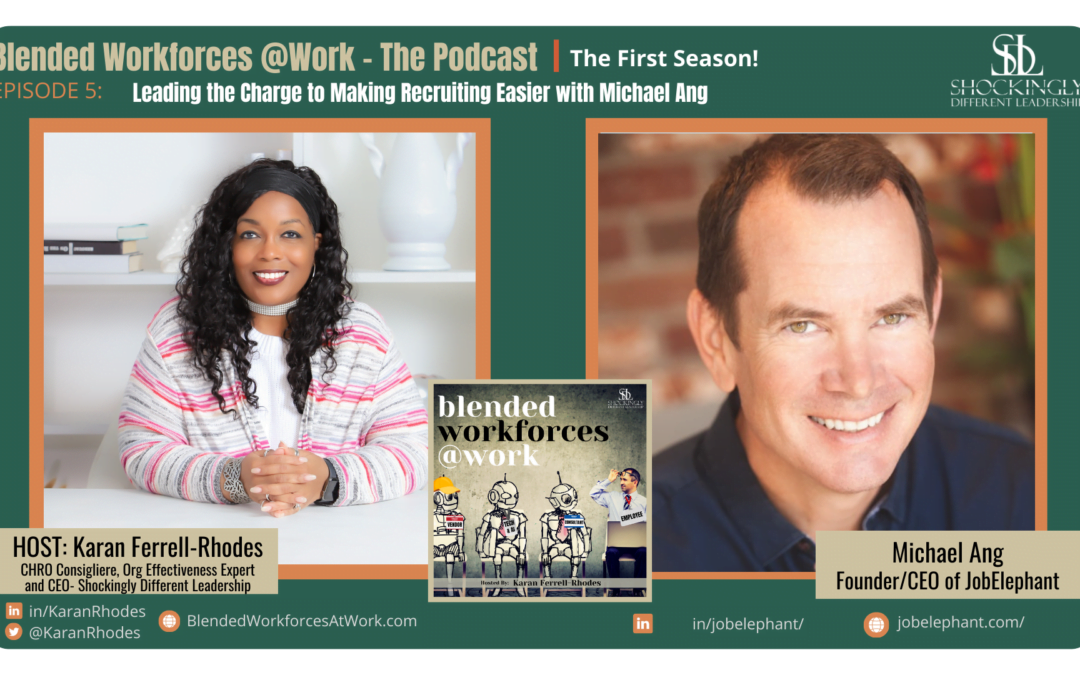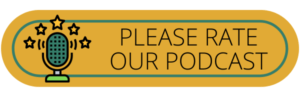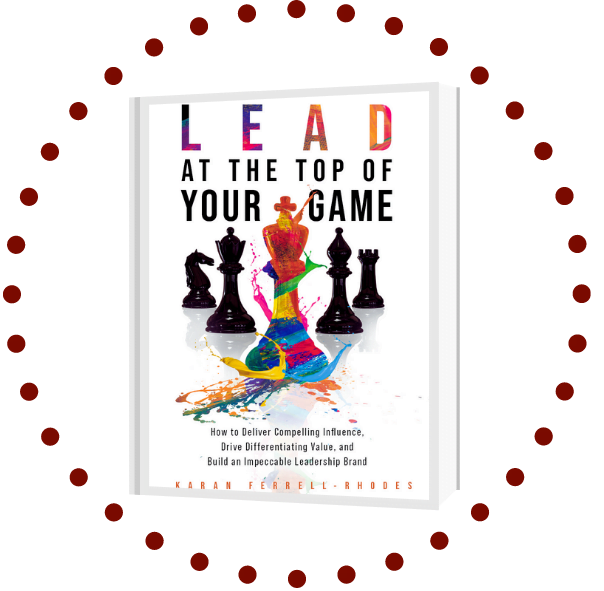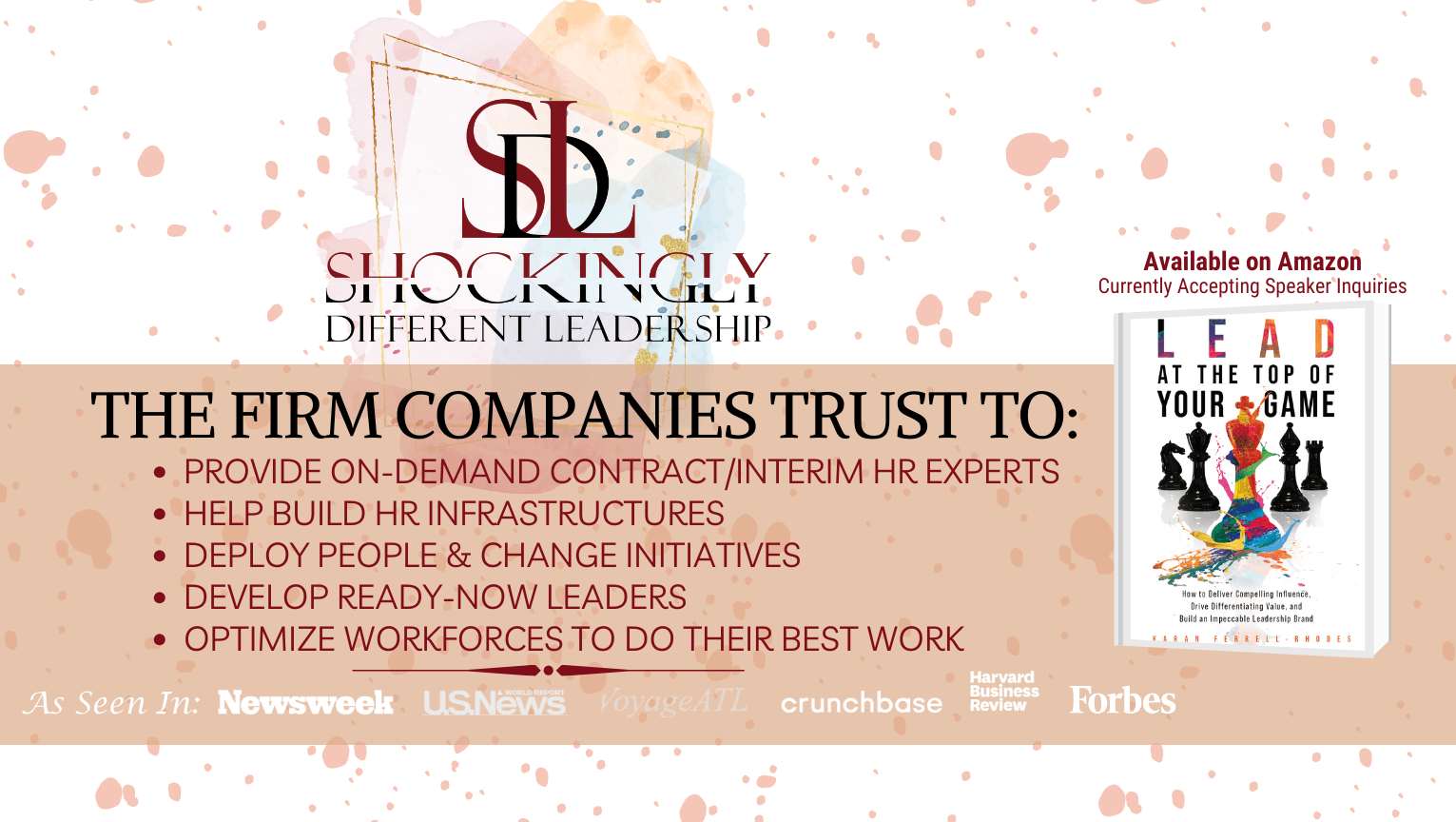IN THIS EPISODE, KARAN FERRELL-RHODES INTERVIEWS MICHAEL ANG.
In this fascinating episode, we unravel the concept of blended workforces and define the critical role of trust in vendor selection. Our discussion ventures into the depths of effective talent acquisition strategies as we navigate the maze of data-driven decision-making and harness the transformative power of metrics to steer organizational practices toward success.
Michael Ang is the CEO and founder of JobElephant, a renowned agency in recruitment advertising. With over two decades of industry experience, Michael brings valuable insights into the dynamics of blended workforces, highlights the common pitfalls of navigating brand culture, and illuminates the path toward embracing diversity recruitment in today’s vibrant and ever-changing workforce.
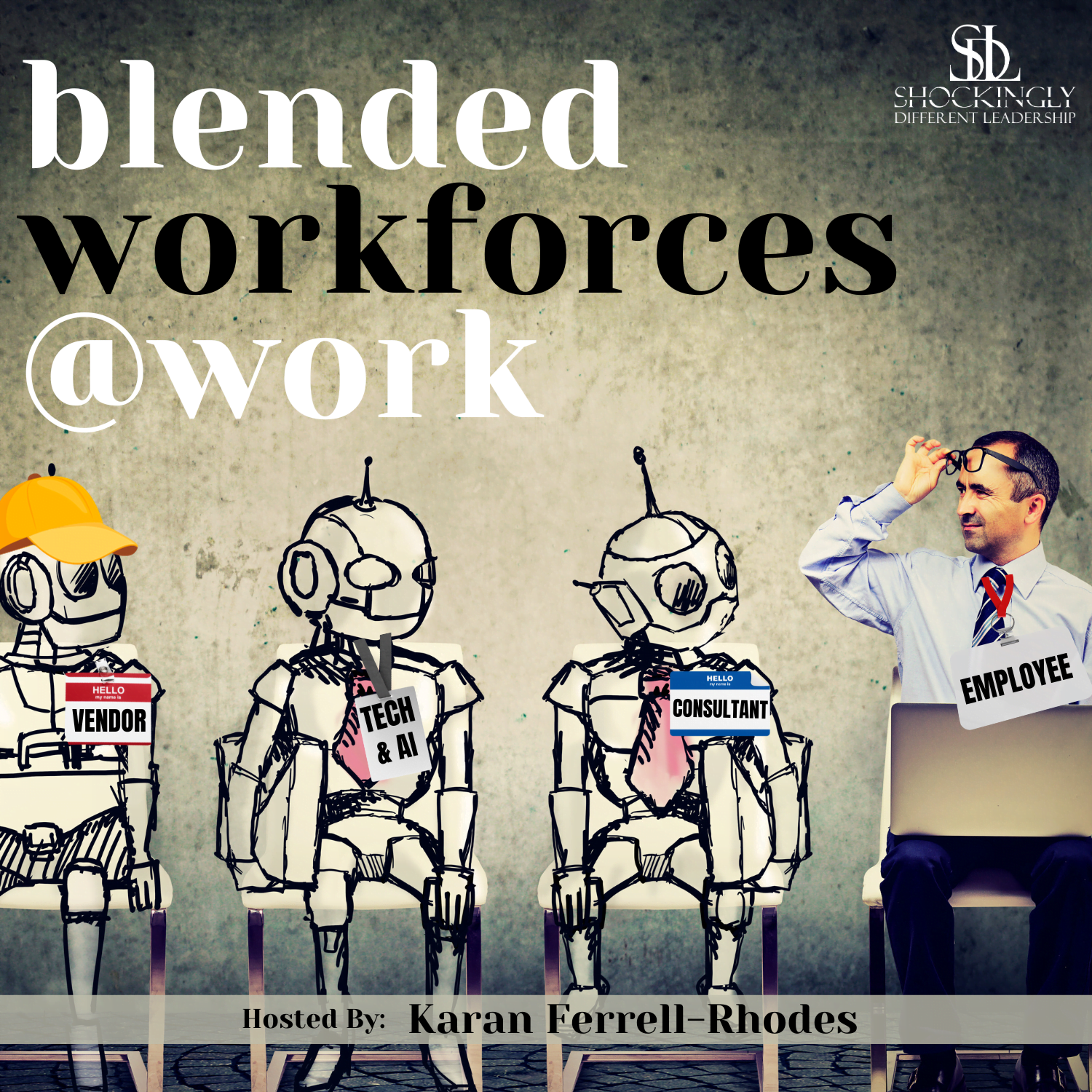
Posted by
SDL Media Team
Rather view our video podcast?

WHAT TO LISTEN FOR:
- What factors contribute to the effectiveness of blended workforces in companies?
- When considering talent acquisition processes, what role does trust play in selecting vendors or contractors?
- What metrics are crucial for evaluating the success of recruitment advertising efforts?
- How does the entrenchment of traditional practices hinder innovation in talent acquisition strategies?
- What criteria should companies prioritize when assessing the quality and relevance of diversity job boards?
“The majority of diversity job boards are garbage.”
FEATURED TIMESTAMPS:
[04:27] Blended Workforce Landscape: Opportunities and Challenges
[07:52] Job Elephant: Job Advertising with Data-Driven Insights
[14:10] AI in Talent Acquisition
[18:43] Criteria for Selecting Vendors and Contractors
[22:04] Overcoming Entrenched Practices in Talent Acquisition
[25:18] Signature Segment: Michael’s entry into the LATTOYG Playbook: Insights from Job Elephant’s Guide
[29:25] Signature Segment: Michael’s LATTOYG Tactics of Choice: Leading with Strategic Decision Making
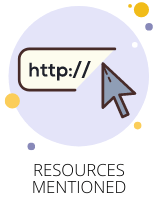
ABOUT MICHAEL ANG:
Michael Ang, the Founder and CEO of JobElephant, boasts an impressive career spanning over two decades in recruitment advertising. With his journey commencing in 1994 as a graphic designer, Michael swiftly ascended to become a prominent figure in the national recruitment advertising landscape. In 2000, fueled by passion and entrepreneurial spirit, he established JobElephant, laying its foundational stones right from his garage.
Under Michael’s visionary leadership, JobElephant has emerged as a pinnacle of reliability and success in recruitment advertising. With a steadfast commitment to excellence, Michael has cultivated an environment where outstanding service is not just a goal but a cornerstone of the company’s ethos. Personally overseeing many accounts, many of which have blossomed into long-standing partnerships lasting over a decade. Michael’s dedication and hands-on approach have been instrumental in JobElephant’s journey to the forefront of the industry.
LINKS FOR MICHAEL:
- Website: jobelephant.com/
- LinkedIn: linkedin.com/in/jobelephant/
- Twitter: twitter.com/Job_Elephant
- Facebook: facebook.com/jobelephant/
- Instagram: instagram.com/jobelephant/
ADDITIONAL RESOURCES FOR YOU:
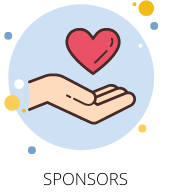
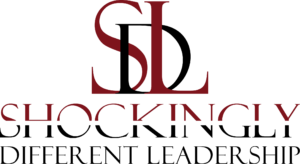
Episode Sponsor
SDL is the go-to firm companies trust when needing to:
- supplement their in-house HR teams with contract or interim HR experts
- implement leadership development programs that demonstrate an immediate ROI and impact on the business

Episode 5 | Leading the Charge to Making Recruiting Easier with Michael Ang
Michael Ang 00:01
We’ve seen these cycles of where it ebbs and flows, the pendulum swings one way or the other, right. And I’ve seen that time and again, where we get a push for more of the temp workers or the 1090 nines or the contract folks, etc. And then it shifts back depending upon either economic swings, or you name it. And I think some of it is just like, Well, we tried this for a while. And now let’s try something different.
Karan Rhodes 00:01
Blending workforces are one of the hottest talent strategies today, where employers are using a mix of traditional employees with external resources like independent contractors, coaches, consultants, vendors, and technology solutions, all in order to enhance competitiveness, ensure cost flexibility, and expedite business goals. But how are the successful companies infusing blended workforces into their business strategy? And what are the critical success factors and pitfalls to avoid during implementation? And on the flip side, what does it really take for suppliers to improve their chances of finding and landing contract opportunities? The devil is in the details, my friends! I’m your host, Karan Ferrell Rhodes, and it’s time to get smarter about Blended Workforces at Work! Hello, my friends and my superstars out there. Welcome to today’s show. We’re absolutely thrilled to spotlight Michael Ang, who’s the CEO and founder of JobElephant, which is one of the most successful agencies and recruitment advertising out there. Now Michael’s a 20 year veteran in the industry, although he doesn’t look a day over 16. But he started JobElephant back in the early 2000s, out of his garage, which is amazing. And he used the strategy of outstanding customer service and strong leadership to grow the business dramatically. I was so impressed with how Michael is a true player coach type of leader because he really stays on top of industry trends. And he even personally manages several 100 long term client accounts himself. So that is so tremendous. And we’re absolutely thrilled that he’s joining our show to talk to us a bit about his perspectives on blended workforces. So welcome to the show, Michael.
Michael Ang 01:59
Yeah. Thanks, Karan. That’s great.
Karan Rhodes 02:01
Oh, we’re so happy to have you. Well, you know, we have a lot to dig into. But before we do this, we’d love to learn a little bit more about you on a personal level. So for just as much as you feel comfortable, can you just give us a sneak peek into either your personal life or hobbies?
Michael Ang 02:19
Yeah,sure. So I’m very spatially oriented type person. So I always like to know where everybody is. That’s like, my first question to you is find out what where are you in the world? Yeah. So I’m in San Diego, California. This is where I’ve been for the last 25 years or so. I’m here with my wife. And then we’ve got two daughters that are young adults, let’s say I think it’s the best way to describe it.
Karan Rhodes 02:45
Wonderful, it sounds like you have a fabulous family and you’re enjoying it. And I’m how’s the weather in California right now? Because in Atlanta, it is picture perfect.
Michael Ang 02:56
Weather is a non subject really in San Diego every once in a while. There’s this water that comes down from the sky that we complain about. But otherwise, it’s 75. And beautiful.
Karan Rhodes 03:06
Oh, wonderful. Well, I’m glad you’re having a fantastic weather like we are at, you know, we’ll have to get to the podcast so you can get outside and enjoy it a little bit more. Well, that’s awesome. Well, Michael, let’s start with one of my favorite questions I love to ask is because we’ve you know, the concept of blended workforces was hugely popular about maybe 810 years ago, but it kind of died down. But then the business strategy of blended workforces have been catapulted right back into our daily lexicon. So my question to you is, in your opinion, and from your perspective, what do you think is the power of companies considering blended workforces? And on the other side, what do you think are some challenges or makes it hard to implement?
Michael Ang 03:58
Yeah, you’re right. I have been in this space for for many years. I started in 1995. And we’ve seen these cycles of where it ebbs and flows, the pendulum swings one way or the other, right. And I’ve seen that time and again, where we get a push for more of the temp workers or the 1090 nines or the contract folks, etc. And then it shifts back depending upon either economic swings, or you name it. And I think some of it is just like, Well, we tried this for a while. And now let’s try something different. But that being said, I think that there’s always going to be a positive for blended workforces. I mean, there always is some degree of that in every business environment. And it really boils down to that particular business and their needs. Right, you know, so I can speak to a couple of things to you. So you mentioned you know, I handle several 100 of my advertising agency customers. So I get To see their perspective on things, and then I also run and manage a an advertising agency, a very small business, you know, so less than 50 employees. But there’s also another 20 or so contractors and other folks that are interfacing with our team. So that being said, we’ve also got multiplying factors to that, where, now, if we talked about this 10 years ago, it would be a totally different conversation. Because now in this world of remote working as through the pandemic, job, elephant actually switched to being a remote only company. So I’m in the office, nobody else is, but the everybody is working remote, just like those contractors that we have, that are on duty for different projects and things like that. So in some ways, that’s made it easier, because nobody has the ability to bend the ear of management any more than if they were in Atlanta, or they were in some other part of the world. And to be able to have that that level of influence. And so it really changes some of the company culture stuff, because I think that blending company, culture, with the consultants and whatnot, everybody else, I think that can be tricky. Obviously, there’s all sorts of fails there. I, you know, there’s the legality side of things in terms of what they can or cannot do and what you, but I always try to when they’re team building, you’re building a team, that team might consist of people, however, they’re compensated, right? That might be from different backgrounds and different compensation levels. And I try to bring all those people together, just to the same point that you’re making here that you and I are meeting for the first time and we’re trying to build a connection, build that relationship so that we can work together. You know, you and I are trying to do a podcast together, we’re trying to get something done. And I think it’s important that those contractors have that time to be part of the team and do the team building exercises with the rest of the employees, whether they’re full time part time, seasonal, you name it.
Karan Rhodes 07:10
It sounds like that makes a lot of sense. Thanks. Awesome. Let’s step back just a moment. And I want to give you an opportunity to share a little bit more about what JobElephant does, and how you differentiate yourself from others in the market.
Michael Ang 07:24
Yeah, thank you for that I Yeah. So I started JobElephant in 2000. And ended up working in a space called let’s just call it nonprofit government public sector for the most part, so and sales vernacular, they call that sled sales. But in any case, that is really our sweet spot, we work with a lot of colleges and universities, a lot of big names, you know, so every university of California campus uses our platform. But we also work with a lot of schools nationwide, about 1000, within our small organization, colleges and universities, from the Ivy League schools down to the tiny little community college in the middle of nowhere, and that might be tiny by size. So I see a big swath of different styles, but I always try to run my operation or consultancy of advertising, to support those that really, public sector is the kind of a lagging indicator of the rest of the world. So whatever might be happening on you know, Madison Avenue, and in New York in terms of skill sets, and best thing, best practices, it might take years, if not decades to filter down into your local Department of Motor Vehicles, right? Best practices. So we try to bring that level of business expertise to our customers, to how to best source their job seekers, right, the how to get those job candidates into their pipeline so that they can make the best hires. So then talent acquisition play a big role in media distribution. So what that means is, is that as an employer, you’re trying to fill a particular role. And our approach is it’s not one size fits all, we’re not going to tell you that, oh, yeah, just post your job on this particular platform. And you’re going to fill all of your racks, right, because that’s not the name of the game. We work with about 24,000 different media sources worldwide. So that means that you know, every publication Association, nice job board, mailing list, you name it, we’ve done it, you know, we can do radio, we could do anything and everything that has to do with promoting a job to a particular market. And that’s our role, right? And then to come to that customer who is the employer and tell them this is the most cost effective way to do this. So there are custom Murrs that come to us and say, you know, hey, I need to hire for a physics professor and I want to post this job, you know, on this particular website. And we can easily do that. But we can also then tell them, and here are five other places you should consider that are more cost effective based upon our analysis. So we track every ad that we do for every one of our customers. So we have what I like to call a little data. So you have Facebook and Google and Apple and all these Microsoft companies that have big data and can run AI algorithms on things or whatnot, we have little data. So if you need to know what the best place to hire a physics professor is, I know that and I’m not sure that necessarily all the AI bots out there in the world know exactly how that works. So we have that that particular real world examples of what has worked and worked recently, and things change over time, we all have been around a bit and maybe saw refer everybody remember, if hot Jobs was a big platform for a while, and that begat, you know, Monster and CareerBuilder, who are really no longer even in part of the conversation, we hardly do any advertising with those types of platforms anymore. There are so many other programmatic type of job boards that have come about pay for performance style advertising, job boards, the LinkedIn, the Indeeds of the world, the zip recruiters, so parsing out all of that stuff and explaining to customers what the different levers are that they have in order to try to reach the right candidate is the end of the game and then getting down funnel. So there’s obviously a talent acquisition funnel, where at the very top of attraction, getting people to apply getting them into your applicant tracking system into your company’s ecosystem, alerting your recruiters, whether that’s a CRM or an ATS, whatever that might be, but but getting your your recruiters to notice that, hey, this person is interested in this job, then I leave it up to the employer to land that particular candidate. Right. So
Karan Rhodes 12:05
That was one of my questions. So you all do a lot of advisement on using the data that you all have as best practices on where to try to source correct tools. But you’re not the screeners per se, correct.
Michael Ang 12:21
We’re not screening, we’re giving everybody everything right back to those employers. And they may, you know, maybe it makes sense, just because we’re public sector, mostly, that they just they can do that themselves, and that there’s no bias that I might be introducing to this other than the fact of where that Job was advertised.
Karan Rhodes 12:38
Gotcha. And this is something that you rather not talk about, this is fine. But I never the clients probably pay for your advisement. But do you have partnerships with the job boards as well?
Michael Ang 12:49
Yeah, so actually, that that’s a really direct question. And I love it, because we don’t charge our customers any more to work with us than they would going direct to any of the media sources. The way that we’re compensated is from the media source, just like an insurance broker can sell Blue Cross anywhere, right? You know, whether it’s through this broker, that broker, I’m a broker of job boards.
Karan Rhodes 13:12
Gotcha! Broker of job boards, wow. I’m gonna get you pins from that makes a lot of the dance. I’m curious, Michael, how has AI impacted what you all do in the process? I know, it’s almost like the processes of talent acquisition, because that could be a five hour podcast, but I’ll just limit to what, how you all approach the work that you will do and advise your clients?
Michael Ang 13:42
Yeah, I mean, as I mentioned, we have our own datasets that we really lean heavily on and then we are trying to supplement that or complement that with some of the machine learning that we’ve we’ve already been using, actually for quite some time now, building out that and I think that AI as it’s known today, I think what you and I define AI today, bro, your definition and my definition might be two different definitions, first of all, and then secondly, I think that no matter what you and I define it as three years from now. So in other words, I’m going into this pretty cautiously, if you will, do not try to give away too much of our proprietary information, please, secrets bosses to I don’t want to necessarily share that. Allow some other platform to come in and take our work and run with it. But at the same time I can see opportunity for speeding processes up right if there’s some menial tasks that we’re doing that we’ve we’ve, I can tell you today about 90% of all the advertising that we do and we have a tremendous amount every minute like just literally in the last five minutes. We’ve probably posted 500 ads, we have 90% of that is done through these automated processes, so that there’s not as many humans touching the data, you know, there’s automation to bring the jobs from an employer’s website, to their ATS, their careers page, whatever that looks like, into our system, go through some algorithms, add some tracking codes to things and then pushing them back out to the different platforms that they might need to reach that job ad distribution. That all happens in a very fast automated process already. And so AI can help us do things like I’ll give you a good example of this. One of the things that we’re trying to train our AI to do is salaries. So this has become a big issue with some of the platforms that are requiring salary. Some states, some governments or local areas are requiring that every job have compensation spelled out in an American passion. But it’s there’s no set standard of like, well, where is the salary going to show up in a job advertisement? And where is the range? Or what is that range look like? And what if there’s all these other extra? Well, it’s, you know, it’s a sales job. And there’s so much commission and all the, you know, there’s so many flavors of compensation. So using AI, we’re trying to train that to help normalize some of that data, so that it can parse through an entire job description and say, Ah, what they mean by that is, this is the salary range, and put that into numerical fashion so that we can create an apples to apples comparison.
Karan Rhodes 16:38
Very cool. Fascinating. Absolutely fascinating. And for your target industries, and I used to do to do a lot in the public sector space, are most of the positions that you advise on, do they end up being more traditional and employer internal roles? Or also contract roles? And net? Or would it focus on?
Michael Ang 17:05
Yeah, so I would say that the vast majority of the job are direct hire employer roles, we do work with actually a lot of executive search firms as well. So they’re the ones that are doing the screening and placement in the end employer business. And then we also work with staffing agencies will actually use our services as well, because of our job and distribution is better and faster than anybody else’s. So I mean, you know, so we see a range, but the vast majority, 90 plus percent are going to be in that that latter category of that their direct hire positions.
Karan Rhodes 17:41
Oh, wow, that makes… What about we mentioned earlier that you kind of have your toe and in both waters, both as an employer and as also being a contractor to other clients. So let me start on the employer side, and I have a few consultants are vendors that you will work with as well. What do you look for, as far as characteristics in order for a vendor or supplier or contractor to be on your shortlist? What did they have to do to really separate themselves from the pack?
Michael Ang 18:16
That’s a really good question. I think that just like when selecting any kind of vendor, it starts to work around trust, you have to have that level of trust. And that is just developed through meetings and conversations and building that rapport with a an individual or an individual company. And, you know, I’m still a big believer that, that people do business with people, not companies. That’s right. So you, you develop that, that that level of trust with a particular vendors, personnel. And then for me, I look at responsiveness, we work at a crazy pace, I feel because we have to satisfy so many customers and their demands, that our you know, our ideas have to be executed very, very quickly. So I guess where I’m going with this is that speed is one of my big, like, how fast can they do things? How responsive are they? So that generally leads me to look at things that are more local in terms of time zones, because, as I mentioned, we’re, you know, a remote company and we have employees over three different time zones and contractors and know those things, but then to broaden that, and to have somebody that would say, you know, in a time zone 12 hours away, that would be a big issue for me, I think just trying to in terms of communication styles of making sure that when I’m working they’re working and that we can work together. So I think that’s one of the other big ticket items I would look at.
Karan Rhodes 19:57
Thank you so much for sharing that because you know the one of the reasons I love asked that question is because there are a lot of individuals who, you know, may have had a successful corporate career and then left to hang their shingle. And just because you were successful in corporate does not necessarily mean you’ll be successful, as you know, your own business, because there’s still standards and that know, like, trust factor, and I can’t, you know, I get a lot of people that ping me for informational interviews, right? And they’re like, how did you do it? And I, you know, and they always say, Well, I don’t want to do business development, I hate sales, but I’m really good at what I do. I’m like, my dear, you’re always in salesman, if you have, you have gotta learn how to get past that. And, you know, gotta learn how to, to deepen, that know, like, trust factor is first by introduction and not spamming people. And then it just takes time. So that’s what I was trying to pull out to see, you know, what kinds of things that you look for? And, yea, fantastic.
Michael Ang 21:05
And, you know, just like with any other, you know, with the trust factor, you know, it’s the friend of a friend type thing, right? Working opportunity that you have, that, you know, you end up meeting somebody and you’re chatting them up, oh, what line of work are you in? And then Oh, you do that? That’s interesting. And then they give you a referral to somebody that helped them. And then you’re like, wow, that’s, that’s already referral. That’s a testimonial to why you should probably work with that that particular vendor.
Karan Rhodes 21:34
Oh. That is fantastic. So, Michael, I’m curious, what do you think is a big miss, or an overlooked situation that companies fail to consider when they’re thinking about their talent acquisition process?
Michael Ang 21:51
In terms of recruitment advertising? You mean or in general? Yeah. I mean, I think one of the issues that I can frequently deal with is a entrenchment, let’s say, and this is the way we’ve always done it, oh, that’s your hay that then we’ve always done it this, I mean, it’s so hard to break those bad habits. And so that really was the impetus of us starting to track our ads 15 years ago, is to help wean our customers off of print advertising, because we were telling them, Look, you can advertise on some of these online electronic digital job boards, or different mediums out there for a fraction of the cost. And so I was able to then show them the data, I tracked their print ads, and I was able to tell them, Look, you know, you spent all this money on this particular campaign. And this is what you you got for that, I mean, you didn’t get nearly the number, the candidate flow that you should have, relative to, you know, even a Craigslist, or, you know, some other social media posts, etc. So, I think changing that behavior or mindset of the employer, that just because we’ve always done it this way, doesn’t mean that that’s the right way. And so, and that really is difficult in my role working with a college campus, because I don’t know if you’re aware of this, but on a college campus, a large university, for example, each one of the departments is their own hiring function.
Karan Rhodes 23:26
I do. We have five University clients, and I learned that over time,
Michael Ang 23:32
So, one of my customers is UC Berkeley, and they have 900 departments on campus. 900 different talent acquisition functions for that one customer.
Karan Rhodes 23:44
Wow.
Michael Ang 23:45
Yeah.
Karan Rhodes 23:45
Well, you know what, that’s lot of opportunity for JobElephant. That’s what that is.
Michael Ang 23:50
Yea. It is. It’s a great opportunity. And I learned things every day that we advertise, because a lot of these universities are so the types of roles that they have, right are so different and unique. So as I always like to kid with people, I’ve actually literally hired for rocket scientists. And I’ve also hired for manure shovelers in the middle of Pennsylvania.
Karan Rhodes 24:13
Oh, wow. And both have equally probably important jobs. And within their context, if you will.
Michael Ang 24:21
Yea. It’s just different, right? Trying to reach those particular kinds of Camp caliber per person that’s going to apply for those jobs. It’s very unique, right?
Karan Rhodes 24:29
It is.
Michael Ang 24:30
That’s where you know, you got to you got to fish where the fish are.
Karan Rhodes 24:33
That’s right, you absolutely do. So Michael, I want you to share also with our listeners, more about your diversity recruitment advertising guide, because it is a fantastic report. And I want to get some airtime to that as well. Can you share a little bit more about that?
Michael Ang 24:49
Yeah, it’s something that’s really unique to JobElephant. So because most of my customers are in public sector, there has been we spend they spend upwards of about a third of their budget on diversity outreach to try to bring in underrepresented groups into their college campuses. And within that, I mean, the goal in general is to have a faculty and staff that mirror that student population. Right, in terms of diversity, and neurodiversity, you name it, whatever that might look like. And so what we’ve done is we’ve done a lot of advertising, trying to reach those underrepresented groups, right, those different types of communities that are out there. And we then put together recently, wow, I would say maybe well, over five years ago, we started, we’ve got this small data set, there was actually what we learned about this is that with diversity job boards, there are a lot of shady, bad actors in this space. Really. Fortunately, I would say that more than half of them are absolutely garbage. What I mean by that is, is that there’s just no traffic, it might have the perfect domain name. And it might have a very beautiful website that has lots of jobs on it, and looks very vibrant, etc. But there’s literally no traffic, there’s nobody there. And they charge exorbitant fees for these things and try to sell contracts and whatnot. And so one of the purposes of this report that we do on an annual basis is to basically share with our customers and our potential customers out there. Well, what are you going to get where it is that you know that when the rubber meets the road? Is this a good website? Is this a good website, and it’s really hard to tell, because sometimes it’s just a matter of like, well, it’s blah, blah, blah.org versus dot.blog.com. And it’s like, these seem like they will be the exact same thing. But they’re not, they’re totally different. They’re sound alike look alike type of, there’s all kinds of scams out there, unfortunately. So Caveat emptor. And you really need to look at the data to see if any of these folks are any good. Because I one of the things that I really hate is, you know, throwing good money after bad like, basically, you think you’re doing something in a positive way for your and reaching a certain community to make that change in your environment. And you’re simply not you’re not reaching the right people. So we’ve got we’ve broken this down to help. Basically, it’s a multi page report, but it will put like job boards, comparing them to one another. So you might have for example, because I’m in academia, I’ll have maybe multiple job boards that target African Americans within higher education. Well, it turns out, there’s like a dozen different organizations, associations and things like that HBCUs, there’s all sorts of different ways to maybe target that same demographic, that same community, and then I can then break it down for you and say, Well, this one’s better than that one, in terms of what the potential ROI can be, what you’re going to get for whatever you pay for a single posting versus an annual contract, you name it.
Karan Rhodes 28:09
Michael, that knowledge alone is pure gold for a lot of corporations. So I hope they did definitely check you out. And we’ll give you some airspace in just a minute to share. We’re defining but before we let you go, as you know, we’d love to ask, you know which of the leadership execution tactics I wrote about in my book kind of resonated with you. And you were so kind enough to share leading with the strategic decision making, as being one for my audience listeners, leading with strategic decision making is just what it sounds like. It’s about making great decisions yourself, or leading a good decision making process with the teams or people that you’re collaborating with. So, after this conversation, I kind of have an inkling of why you chose that one, Michael, but I’ll let you share with us why that resonates.
Michael Ang 28:55
Yea…I’m a… Look, I’m a data nerd, I absolutely love the metrics, I let the data, you know, it’s about collecting data on everything, if you’re not measuring it, you’re not going to be able to see any kind of improvement. So I’m a big fan of setting up those processes to measure all the time, always be measuring something. And then looking at that data flow, looking at trends, and letting that data guide the decision making process. And that really boils down to everybody in the company and all the managers that I have. We look at that on a departmental level we look at that in an individual level. But that really is a big component just looking at the metrics and you know, and making sure to measure everything and not just letting it just ride with a gut feeling.
Karan Rhodes 29:47
Absolutely because that you’ll only know progress if you do the measurement so, oh, absolutely. Well, wow, what an episode I was feverishly taking notes myself. We’re gonna have all the information about you, Michael and our show notes. But let me give you a few seconds to share where the listeners can find you.
Michael Ang 30:08
Yeah, so obviously, I’m on LinkedIn, but you can always reach me directly via email Michael@jobelephant.com. And I always kid that I’m not gonna be able to ever hire somebody named Michael at this company again, because, but, yes, email is great. I love that and just go to our website, jobelephant.com.
Karan Rhodes 30:28
Well, that’s all the time we have for today. But I want to thank you, Michael, for your gift of time and joining us, we learned a ton. It has been a fantastic conversation. And we really appreciate you sharing your perspectives with us today.
Michael Ang 30:42
Thanks a lot, Karan. This is great.
Karan Rhodes 30:45
And thank you to listeners for joining another episode of the blended workforces that work podcast. We hope that you will share it with just one friend. Because by doing so, we can all get smarter about blended workforces at work. Thanks so much and see you next week. Well, that’s our show for today. Thank you again for listening to the Blended Workforces at Work podcast. You can check out the show notes, additional episodes, bonus resources, and also submit guest recommendations on our website at blendedworkforces@work.com. You can also follow me on Twitter, LinkedIn, Instagram or YouTube by searching for the name Karan Rhodes with Karan being spelled K a r a n. And if you like the show, the greatest gift you can give would be to subscribe and leave a rating on your favorite podcast platform of choice. This podcast has been a production of Shockingly Different Leadership, a global consultancy which helps organizations execute their people, talent development, and organizational effectiveness initiatives on an on-demand, contract, fractional, or project basis. Huge thanks to the SDL production and editing team for a job well done. Bye for now.

Want to be a Podcast Guest?
Check out our guest qualifications and submit our brief form to be considered.
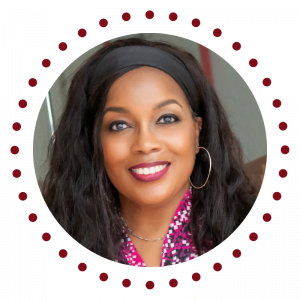
Want Karan to be Your Podcast Guest?
- Blended Workforces & the Gig Economy
- Critical Execution Tactics of High-performing Leaders
- Entrepreneurism & Leading Your Business

Want to be a Podcast Sponsor?
All sponsorships come with a featured spot on show notes pages.
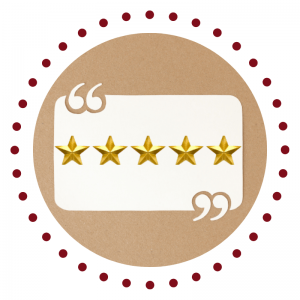
Like the Show? Please Leave a Review
If you like the show, it would mean the world to her if you left a quick review.
Your word is golden, so a HUGE thank you in advance!
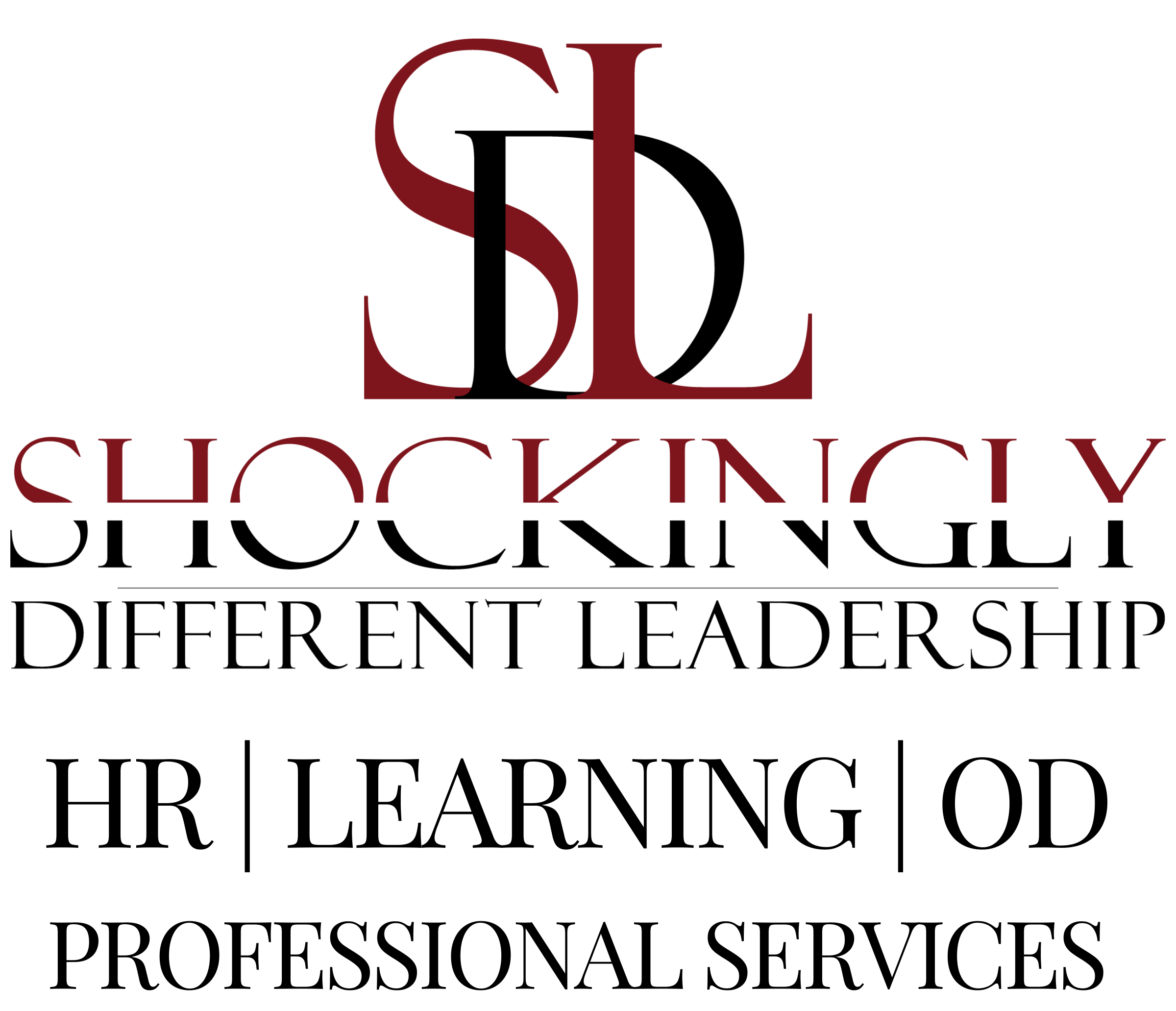
#KeepInTouch
via our podcast alerts
Subscribe now to discover why thousands of monthly listeners who are passionate about doing their best work prioritize time each week to listen to the Blended Workforces @Work podcast.
#AboutSDL
#WhereToFindUs
MAILING
4480-H South Cobb Drive
PMB 219
Smyrna, GA 30080
PHYSICAL
2121 NewMarket Parkway
Ste. 108
Marietta, GA 30067
#ContactOptions
Customer Service Email:
service@shockinglydifferent.com
Call or Text:
770-384-1103
#Office Hours
MON-FRI
8:30 AM – 6:30 PM
Weekends By Appointment

